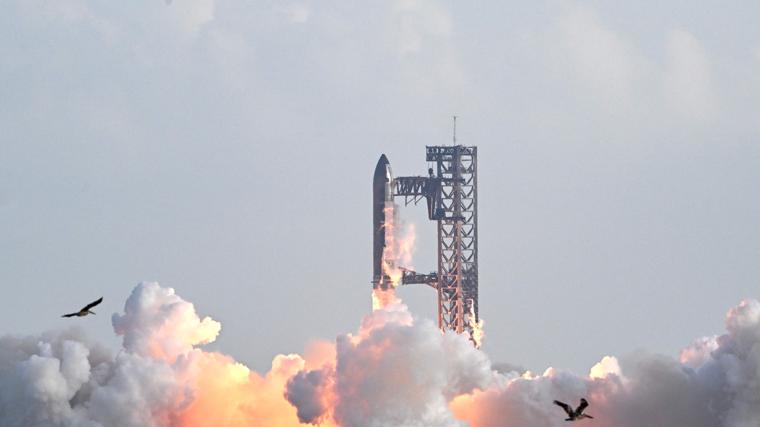SpaceX's Starship rocket successfully completes its tenth test after several failed attempts.

The largest rocket ever built, SpaceX's Starship, took off on Tuesday on its tenth test flight, following a series of technical problems that had cast doubt on its viability.
 SpaceX's Starship rocket successfully completes its tenth test after several failed attempts.
AFP
SpaceX's Starship rocket successfully completes its tenth test after several failed attempts.
AFP
The 120-meter-tall giant lifted off from its base in Texas shortly after 6:30 p.m. local time (11:30 p.m. GMT), and the upper stage successfully landed in the Indian Ocean about an hour later, having met its key objectives, according to a video broadcast by the company, owned by billionaire Elon Musk.
“Landfall confirmed! Congratulations to the entire SpaceX team on an exciting 10th Starship flight test!” the company wrote on X.
The test flight took place this Tuesday after postponements on Sunday and Monday, caused first by a technical problem and then by adverse weather conditions.
This succession of setbacks, which was compounded by another explosion during a ground test in June, raised doubts about Starship's progress, while Musk maintains his goal of achieving the first launches to Mars by 2026.
Although SpaceX has so far successfully navigated its daring bets, its mega-rocket has still "not proven reliable," Dallas Kasaboski, a space expert at the consulting firm Analysys Mason, told AFP.
"The successes have not outweighed the failures," the expert estimated, warning that this new test flight was putting Musk's company under "heavy pressure."
Known for his overly optimistic forecasts and wild projects, this former advisor to US President Donald Trump revolutionized the space industry with his reusable rocket production system, which now dominates the commercial launch market.
With Starship, designed for interplanetary travel, Musk's company aims to go even further and realize its dream of colonizing Mars.
Modified versions of Starship are expected to serve NASA's Artemis program, which will return American astronauts to the Moon, as well as long-distance Earth flights, with which SpaceX promises its customers can reach "anywhere in the world in an hour or less."
But before conducting manned flights or reaching Earth's natural satellite and the red planet, Starship will have to overcome "thousands of technical challenges," Musk admitted Monday from his space base in Texas, while declaring himself "confident."
While SpaceX has already managed to recover the first stage of the mega-rocket, which propels the entire assembly in a spectacular maneuver, this is not yet the case for the ship at the top end, which it also wants to reuse.
ABC.es




